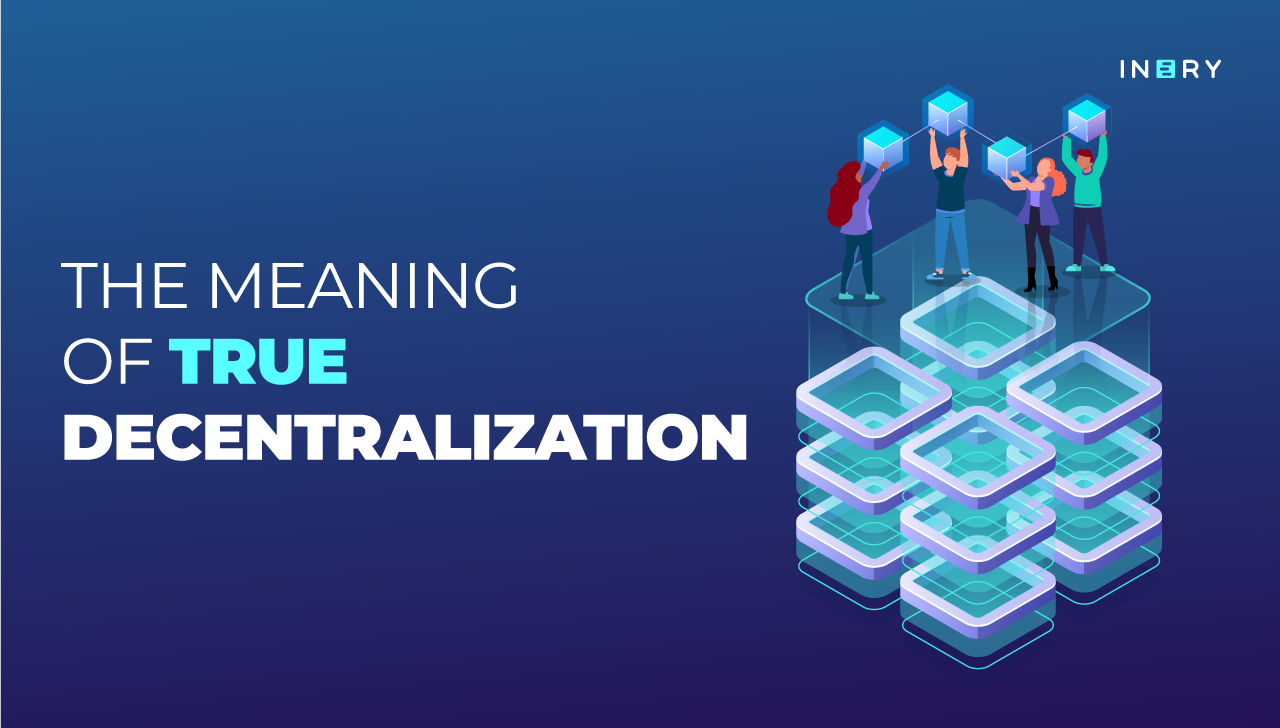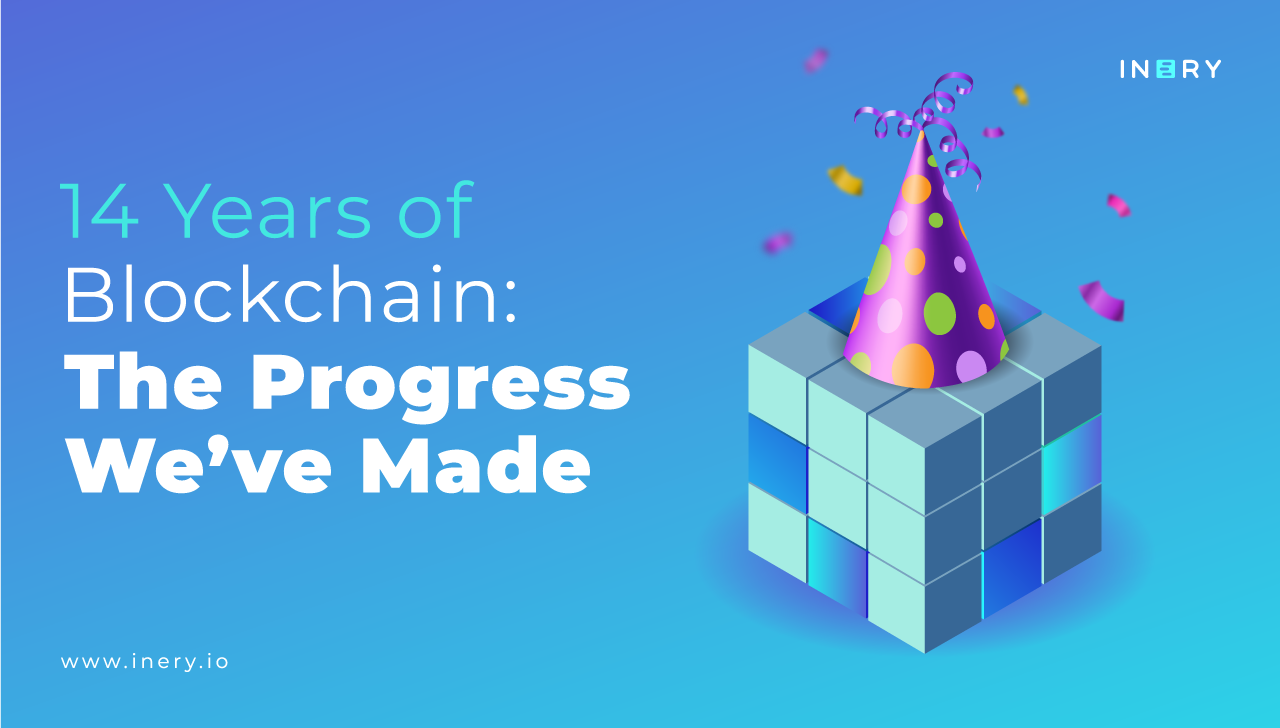At the time of writing, fourteen years have passed since Bitcoin was introduced to the world. In the tech realm, this is more than enough time to make great strides. And blockchain technology certainly has made progress, seeing that it’s widely discussed among developers, C-suites, and crypto fans alike.
However, it’s worth looking back at the progress the blockchain has made besides sparking debate. A retrospective can help us better appreciate the accomplishments in the blockchain sphere; it also helps us take stock and make reasonable predictions for the technology’s future.
The Blockchain’s Greatest Hits
The advent of cryptocurrencies like Bitcoin and Ethereum is without a doubt the greatest breakout for the blockchain into the mainstream. Their rise in popularity brought the blockchain into the global tech discourse. The former inspired a slew of altcoins, whereas the latter provides a foundation for thousands of dApps.
In the 2010s, blockchain applications were on a massive rise. This period was marked by Blockchain 2.0, i.e., the separation of the blockchain from crypto. From there, we saw the release of NEO, the first open-source blockchain platform, and IOTA, a major fee-less IoT blockchain. During this period, we began seeing how much the blockchain can truly do.
Japan recognizing Bitcoin as a legit currency in 2017 was a major achievement, too. It provided a blueprint for other countries to integrate cryptocurrency into their legal infrastructure. Comprehensive, worldwide regulation is still far off, but this was a major step in that direction.
More recently, Ethereum switched to Proof of Stake in 2022. By doing so, it dramatically reduced its energy consumption; reducing power requirements by around 99.95%. This served as proof that blockchain doesn’t have to be a power-guzzling technology.
Blockchain Rising: Market Growth and Adoption
Judging by the numbers, the blockchain will be enjoying strong market growth in the following years. In the forecast period between 2023 and 2030, the blockchain market will grow at a compound annual growth rate (CAGR) of 87.7%. By 2030, the entire industry should be worth over $1.4 trillion. Businesses are seeing the power of the blockchain, so more and more of them are making major investments in it.
Most of this growth will come from the financial sector, as more and more banks find viable use cases for the blockchain. However, industries like logistics and transportation, healthcare, retail, and travel also hold big slices of the market pie, so their contribution will be substantial.
Both large and medium-to-small businesses are adopting blockchain solutions. More specifically, blockchain as a ledger for private cloud solutions is becoming an increasingly popular application. Large enterprises make up most of the market share, though, accounting for more than 67% of global revenue. That said, the SME (Small & Medium Enterprise) blockchain segment should grow at a faster CAGR.
Depegging the Blockchain From Crypto
For years, the words “blockchain" and “crypto” were practically synonymous in the public’s eye. This is understandable, seeing that digital money has been the biggest application of the blockchain. But in more recent years, these two words have decoupled, opening up a whole new world of possibilities for the blockchain.
This is a more important accomplishment than one would initially think. For the longest time, the association between crypto and sketchy investment playthings has held back the blockchain’s full potential. With the number of Ethereum dApps rising and concepts like GameFi entering the conversation, the blockchain’s image will become much more flexible.
Is the Hype Around the Blockchain Too Much?
The blockchain is a powerful alternative to legacy database solutions. It uses decentralization, immutability, transparency, encryption, and a host of other features to revolutionize how we view and handle data.
All the above is true, but it also leads people to view the blockchain as the most world-changing advancement ever. Enthusiasts’ passions go wild, and they want to see the blockchain implemented everywhere from government institutions to electric kettles.
This elation makes sense to a degree, given the rising adoption rates and news coverage about this tech (especially among crypto and Web3 communities). But it’s vital to take a more realistic look at the blockchain and its capabilities.
The blockchain is a very useful tool, but it still has issues with scalability and redundancy. We still need to neatly adapt to some of its innate features, like immutability and transparency (which can be counterproductive in some cases). As such, the blockchain shouldn’t be replacing every database, especially while we haven’t worked out all the kinks.
For now, use cases like international payments and regulatory compliance are blockchain’s strong suits. Future improvements may expand its utility, but we’ll just have to wait until that happens.
The Road Ahead for the Blockchain
As the concept of Web3 becomes more prominent, the blockchain’s popularity and market saturation are bound to grow. Growing demand for decentralization and data autonomy will place the blockchain at the centerfold of the Web3 movement. Businesses and other service providers will respond to that demand, integrating distributed ledger technology (DLT) into their technology stack and adapting the way they interact with more data-independent customers.
For now, education is among the biggest roadblocks toward widespread adoption. Blockchain in higher education has yet to catch on, but on the bright side, the majority of blockchain-savvy parents would like to see crypto studied in school. As time and regulations pass, this tech will become more prominent in our lives, creating a whole generation of blockchain natives.
Another challenge for the blockchain will be to balance regulation and innovation. Regulators will have to walk a tightrope, with market failure contingencies and input from industry innovators being the counterweights. But the blockchain will eventually shed its reputation as a speculative roller-coaster so the tightrope will widen.
Building a Better Blockchain Future With Inery
Inery’s vision is to offer a sustainable, truly valuable way for the blockchain to be a part of our lives. It does so through its game-changing product, IneryDBMS.
A decentralized database management solution, IneryDBMS is built on a scalable layer-1 blockchain. It allows users to empower their databases with enhanced security and stability, all the while streamlining interactions with data.
Through IneryDBMS, the blockchain’s capabilities can truly shine, validating the vital role it plays in the digital world of Web3. When decentralization and data sovereignty become the norm, we’ll need an appropriate paradigm for data. And with Inery, Web3 is just a node away.

Inery•
1 year ago
Inery & Land and Real-Estate Authorities – A Common Ground
Diving deep into Inery's core strengths to offer opportunities and combat issues in the Land and Real-Estate department ...READ MORE

Share

Inery•
1 year ago
IneryDB Load Balancer: A Powerful Solution to Network Bottlenecks
The blockchain-powered IneryDB Load Balancer manages network requests, safeguarding applications against bottlenecks. Learn more here. ...READ MORE

Share

Inery•
1 year ago
The Meaning of True Decentralization
True decentralization is more than just a marketing tagline. Click here to learn what it is—and where it is. ...READ MORE

Share

Inery•
6 months ago
Are Crypto Regulations Ruinning Web3 Projects and Businesses?
As the crypto industry grapples with the regulatory surge, the destiny of Web3 projects hinges on finding harmony between innovation and regulation, shaping the decentralized ecosystem's future. ...READ MORE

Share
Most popular today


-1665070349.png)
